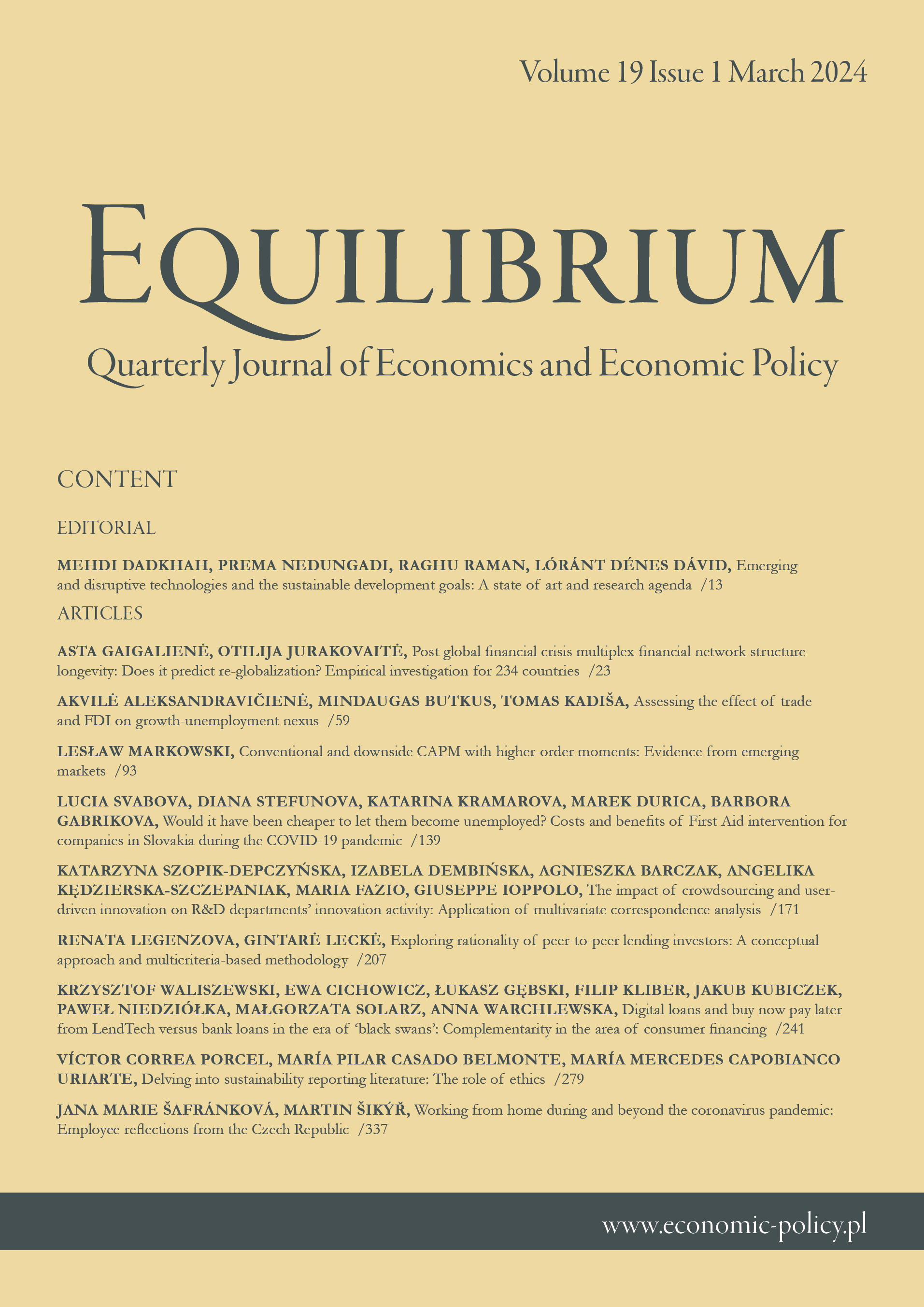SOCIAL CONVERGENCE IN NORDIC COUNTRIES AT REGIONAL LEVEL
IF 5
Q1 ECONOMICS
Equilibrium-Quarterly Journal of Economics and Economic Policy
Pub Date : 2017-03-31
DOI:10.24136/EQ.V12I1.2
引用次数: 15
Abstract
Research background: Geographical proximity, common historical roots and collaboration within the Nordic Council cause the Nordic countries to be often wrongly treated as mono-liths. However, in reality, Nordic regions differ in terms of broadly defined social and eco-nomic development. Issues concerning the standard of living are one of the priorities of the Helsinki Treaty signed by Nordic countries. Purpose of the article: The main goal of this paper is to analyze the existence of the social convergence in the Nordic NUTS-3 regions over the 2000-2015 period. The social conver-gence refers to a reduction in the dispersion of the standard of living across regions. The results of this analysis may be helpful in evaluating the efficiency of the activities under third and fourth Nordic Strategy for Sustainable Development. Methods: The spatial taxonomic measure of development proposed by Pietrzak was used as the standard of living approximation. Inclusion of spatial relationships in the construction of taxonomic measure of development is justified as regions are not isolated in space and can be affected by other units. The existence of beta-, sigma- and gamma convergence was tested for global spatial aggregate measure and as well for sub-groups of determinants forming the standard of living. Findings & Value added: The analysis showed that the regions with the highest standard of living are those situated on the west coast of Norway. Regions with the lowest standard of living were the ones located in central Finland. However, the most important part of this research was to investigate the existence of beta-, sigma- and gamma- social convergence. The results show that there is no convergence for global standard of living measure. However, the convergence occurs in groups of determinants of education and health care.北欧国家在区域层面的社会趋同
研究背景:地理上的接近,共同的历史根源和北欧理事会内部的合作导致北欧国家经常被错误地视为单一巨石。然而,在现实中,北欧地区在广义的社会和经济发展方面是不同的。有关生活水平的问题是北欧国家签署的《赫尔辛基条约》的优先事项之一。文章目的:本文的主要目的是分析2000-2015年期间北欧nut -3地区社会趋同的存在。社会趋同是指各地区生活水平差距的缩小。这项分析的结果可能有助于评价第三和第四项北欧可持续发展战略下各项活动的效率。方法:采用Pietrzak提出的发展空间分类学测度作为生活水平近似测度。将空间关系纳入发展分类学指标的构建是合理的,因为区域在空间上不是孤立的,可以受到其他单位的影响。贝塔、西格玛和伽玛收敛的存在性在全球空间聚合度量中以及在形成生活水平的决定因素的子群体中得到了检验。研究结果和附加价值:分析显示,生活水平最高的地区位于挪威西海岸。生活水平最低的地区是位于芬兰中部的地区。然而,本研究最重要的部分是调查β -、σ -和γ -社会趋同的存在。结果表明,全球生活水平指标不存在趋同现象。然而,这种趋同发生在教育和保健的决定因素群体中。
本文章由计算机程序翻译,如有差异,请以英文原文为准。
求助全文
约1分钟内获得全文
求助全文
来源期刊
CiteScore
9.20
自引率
3.50%
发文量
28
审稿时长
36 weeks
期刊介绍:
Equilibrium. Quarterly Journal of Economics and Economic Policy is a scientific journal dedicated to economics, which is the result of close cooperation between the Instytut Badań Gospodarczych/Institute of Economic Research (Poland) and Polish Economic Society and leading European universities. The journal constitutes a platform for exchange of views of the scientific community, as well as reflects the current status and trends of world science and economy.
The journal especially welcome empirical articles making use of quantitative methods in: Macroeconomics and Monetary Economics, International Economics, Financial Economics and Banking, Public Economics, Business Economics, Labor and Demographic Economics, Economic Development, and Technological Change, and Growth.
Current most preferable topics and special issues:
The economics of artificial intelligence: business potentials and risks;
Digitalization and entrepreneurship in economics;
Sustainable socio-economic development, environmental and ecological economics;
Transition in the energy market (improving energy efficiency, alternative energy sources, renewable energy, energy security).

 求助内容:
求助内容: 应助结果提醒方式:
应助结果提醒方式:


